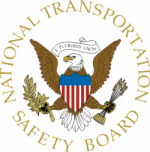Sat, Mar 06, 2010
Neither Pilot Saw The Other Aircraft Prior To The Accident
 The NTSB has issued its probable cause report in a mid-air
collision which occurred May 18th, 2009 off the coast of Long
Beach, CA. The board determined that both pilots failed to see and
avoid the other aircraft in order to prevent the collision.
The NTSB has issued its probable cause report in a mid-air
collision which occurred May 18th, 2009 off the coast of Long
Beach, CA. The board determined that both pilots failed to see and
avoid the other aircraft in order to prevent the collision.
According to the NTSB report:
"A Cessna 172N and a Cessna 310P collided in flight in a common
practice area for airwork. A witness was flying on a southerly
heading within the immediate area of the collision and noticed a
silhouette of an airplane, which appeared to be a Cessna 172 at his
10 to 11 o'clock position. The airplane appeared to be performing
maneuvers and making turns in a counter-clockwise direction,
followed by a turn in a clockwise direction.
The witness stated that he noticed another airplane entering the
area from the west, traveling at a high rate of speed on an
easterly heading. He added that he was unable to see what kind of
airplane it was and only saw a "black object" due to the sun being
almost on the horizon. The witness continued to watch both
airplanes and noted the fast moving airplane was continuing on an
easterly heading while the Cessna 172N was still performing
maneuvers on a southerly heading around the same altitude. The
witness observed both airplanes collide, disintegrate into small
pieces, and fall to the ocean below.
Review of recorded radar data revealed that the Cessna 310P was
maneuvering within a common practice area about 5 miles south of
the shoreline at various altitudes. The data depicted the Cessna
172N on a southerly course at an altitude of 3,000 feet msl while
conducting a series of shallow left and right turns prior to
performing a left 360-degree turn to a southerly heading. The
Cessna 310P was on an easterly heading at an altitude of 3,000 feet
msl for about 2 minutes prior to the collision. The radar data
depicted the two airplanes converging nearly perpendicular to one
another about five miles south of the shoreline. During examination
of the recovered wreckage, transfer marks were identified
consistent with the radar-derived collision angle. Both airplanes
were operating under visual conditions when they collided."
The NTSB determined that the probable cause of this accident was
"(t)he failure of both pilots to see and avoid each other's
aircraft."
More News
From 2023 (YouTube Edition): New Propulsion Scheme Optimized for AAM Applications Founded in 2017 by Eric Bartsch, Pat Anderson, and Erik Lindbergh (grandson of famed aviation pion>[...]
During The Initial Climb, The Engine Began To Operate Abnormally And, After About Three Seconds, Experienced A Total Loss Of Power On October 29, 2025, about 1820 Pacific daylight >[...]
Aero Linx: Women in Aviation International Women in Aviation International is the largest nonprofit organization that envisions a world where the sky is open to all, and where avia>[...]
“We’ve paid for the cable line’s repair for the customer and have apologized for the inconvenience this caused them...” Source: Some followup info from an A>[...]
“We have long warned about the devastating effects of pairing optimization. Multiple times over many months, we highlighted how schedule manipulation, unbalanced schedules, a>[...]
 Classic Aero-TV: VerdeGo Debuts VH-3 Hybrid-Electric Powerplant
Classic Aero-TV: VerdeGo Debuts VH-3 Hybrid-Electric Powerplant NTSB Prelim: Grumman American Avn. Corp. AA-5B
NTSB Prelim: Grumman American Avn. Corp. AA-5B ANN's Daily Aero-Linx (12.02.25)
ANN's Daily Aero-Linx (12.02.25) Aero-News: Quote of the Day (12.02.25)
Aero-News: Quote of the Day (12.02.25) Aero-News: Quote of the Day (12.03.25)
Aero-News: Quote of the Day (12.03.25)



